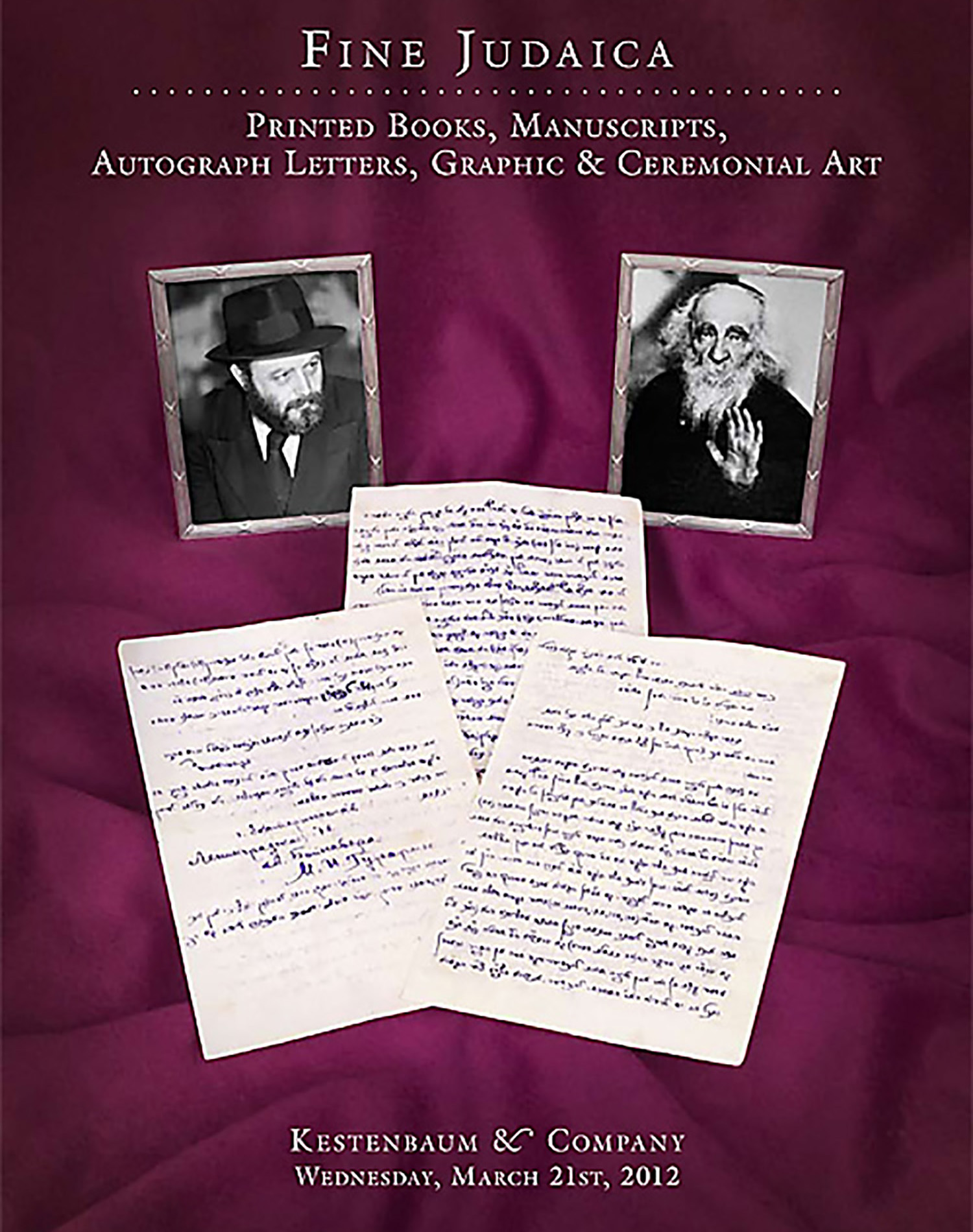(RaMBa”M). <<Fragment from a Lost Manuscript of Maimonides’ Commentary to the Mishnah.>> Written by Saadiah al-Adani in 1222 in Judeo-Arabic. Includes the commentary on Tractate Temurah VI:40 - VII:1 along with the Mishnah in Hebrew VI:5 - VII:1.

AUCTION 54 |
Wednesday, March 21st,
2012 at 1:00
Fine Judaica: Printed Books, Manuscripts Autograph Letters, Graphic & Ceremonial Art
Lot 282
MAIMONIDES, MOSES.
(RaMBa”M). <<Fragment from a Lost Manuscript of Maimonides’ Commentary to the Mishnah.>> Written by Saadiah al-Adani in 1222 in Judeo-Arabic. Includes the commentary on Tractate Temurah VI:40 - VII:1 along with the Mishnah in Hebrew VI:5 - VII:1.
Est: $18,000 - $22,000
PRICE REALIZED $23,000
This manuscript belongs to one of the oldest copies of the Mishnah commentary by Maimonides. <<Written less than twenty years after Maimonides had passed away.>> <<A fragment from the oldest dated Hebrew codex copied in Yemen.>>
These leaves form part of a lost manuscript of Moses ben Maimon’s commentary on the Order Kodashim of the Mishnah that was likely part of a series of manuscripts encompassing the commentary on the entire Mishnah. The only extant volume of this copy - the commentary on Order Nezikin - is preserved in a manuscript housed in the State Library in Berlin (Cod. Or. Qu. 568), that was copied in a Yemenite script by the scribe S’adiah ben Yahya ben Halfon al-Adani in Aden at the end of 1222. No other parts are known to be extant.
There can be no doubt that the same scribe copied this fragment, and that it belonged to the copy of the commentary on the entire Mishnah written in 1222. The script and layout of the pages is identical in both manuscripts. The same sign added at the end of paragraphs, a triangle formed by three dots, is found in both manuscripts and in both, exceeding words at the end of lines are written diagonally. Another rare and perhaps unique feature is found in both manuscripts: The text is not vocalized; vowel-signs were not added to the words. However, in both manuscripts the scribe, or a later owner, added vowel-signs according to the Tiberian vocalization and the Yemenite pronunciation to the chapter headings (Perek Rishon, Perek Sheni, etc).
<<The discovery of this sheet from a long lost manuscript whose scribe can be clearly identified and date established is quite extraordinary.
>>With thanks to Dr. Benjamin Richler of the Hebrew University, Jerusalem, for his assistance in researching this manuscript.
